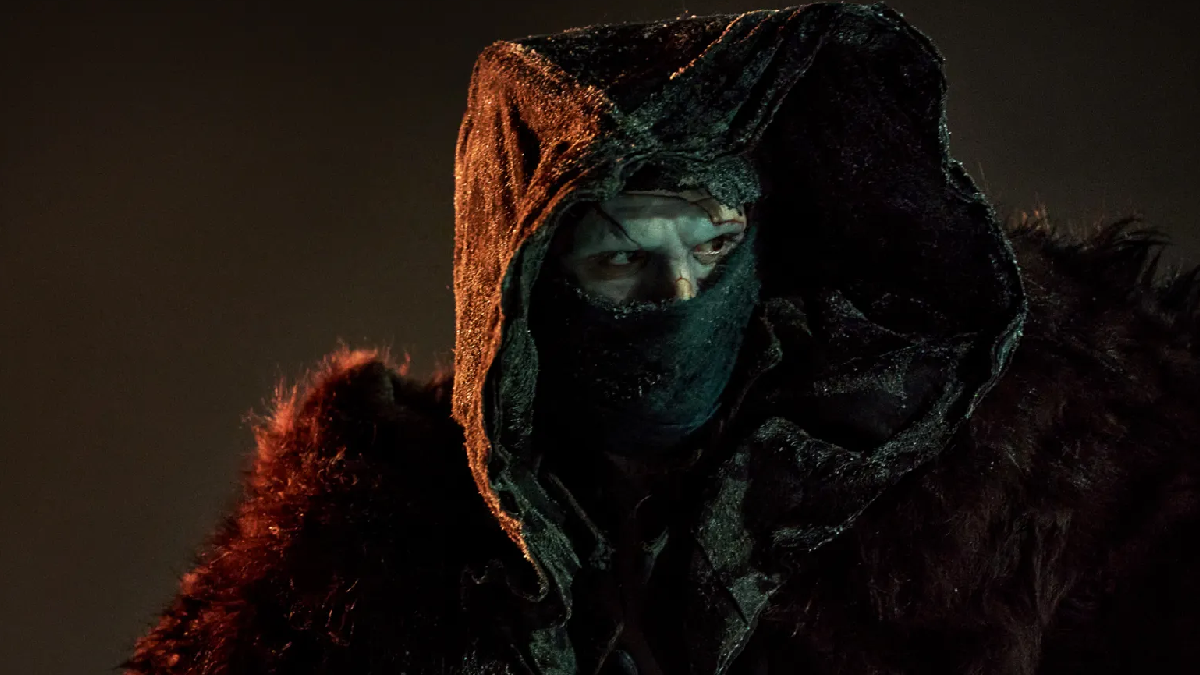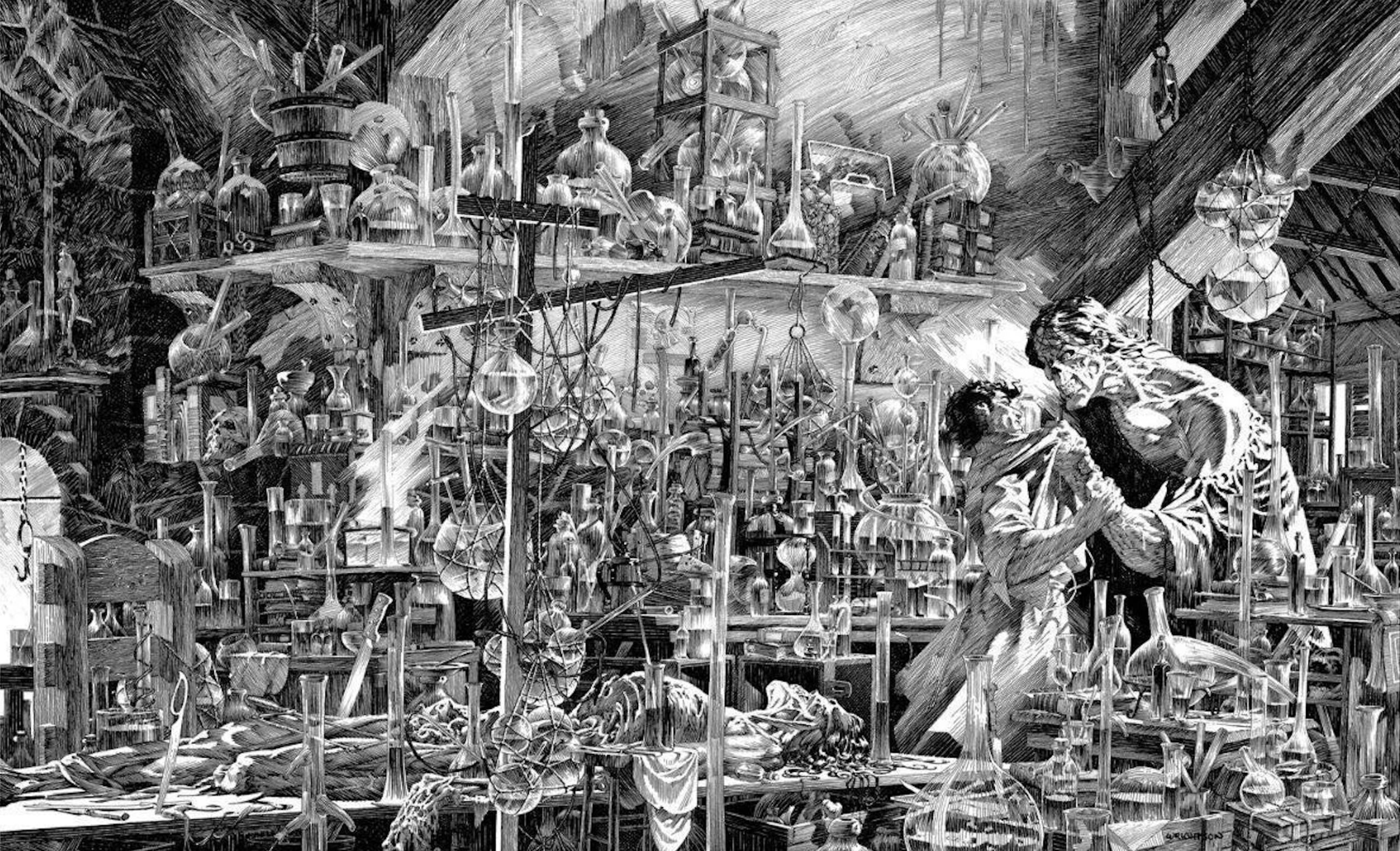
The season of Guillermo del Toro’s Frankenstein is officially upon us, with the movie playing in select theaters before a global debut on Netflix on November 7th.
As the film’s trailers and early reviews have illustrated, the project just might be a masterpiece… one that tells its own sweeping tale while being incredibly reverential to both Mary Shelley’s source material and the larger cultural mythos of Frankenstein’s monster. For eagle-eyed fans, one particular name proves this in spades, giving a beloved comic creator their flowers.
Towards the end of Frankenstein‘s credits, the following phrase is displayed: “Frankenstein character design inspired in part by Bernie Wrightson’s Frankenstein Monster. Early concept development and early concept sculptures by Spectral Motion and Bernie Wrightson.”
For those who might be unfamiliar, Wrightson was a prolific part of the Silver and Bronze Ages of comics, especially in the ever-evolving horror subgenre on anthology titles like House of Mystery, Chamber of Darkness, and Tower of Shadows. In 1971, he and writer Len Wein co-created DC’s Swamp Thing, who has since gone on to inspire movies, shows, and crossovers few could have imagined. Wrightson’s distinct art style has made its way into countless comics, album covers, and even concept art for movies like Spider-Man, Ghostbusters, and Galaxy Quest.
In and amongst all of that, Wrightson devoted seven years of unpaid work, which he later called a “labor of love”, to illustrating Shelley’s Frankenstein. The art aimed to capture Shelley’s descriptions of the characters and settings, as opposed to any film adaptations that had existed at the time. The edition featuring Wrightson’s art was ultimately released in 1983, and has since gotten reprinted in multiple editions.

For Frankenstein fans, and just horror comic fans in general, Wrightson’s illustrations of the book have become the stuff of legend, to the point of his original cover art selling for $1.2 million in a 2019 auction. In 2016, del Toro revealed that he owned nine of Wrightson’s original illustrations, regarding them to be among his prized possessions.
A monster years in the making…
That brings us to del Toro’s Frankenstein… and actually, all the way back to 2008. At the time, the director had signed a first-look deal with Universal Pictures, during which he planned to bring his adaptation of Frankenstein to life. He cited Wrightson’s art as a major source of aesthetic inspiration, and had hopes of the creator designing the monster for the film.
A year later, makeup tests seemingly began with Spectral Motion, del Toro, and his frequent collaborator Doug Jones, who called the design “hauntingly beautiful” and reverential to Wrightson’s illustrations. In a recent interview with Fresh Air, del Toro did confirm that Wrightson “collaborated with [him] earlier on,” although the exact extent of that is unknown at this time.
Still, for those who have seen Frankenstein (or at very least, the viral behind-the-scenes photo of Jacob Elordi as the monster), Wrightson’s impact is undeniable. The character’s long hair, gaunt frame, and patchwork of flesh are undeniable… and when combined with Elordi’s acting, they craft something that is genuinely beautiful.
Part of me does wish that Wrightson’s credit in Frankenstein was even more promient, just given the way that most of the moviegoing audience is going to engage with the movie. By the time it arrived in our theatrical showing, the house lights were on, nearly everyone else had already left, and the servers were whizzing around us picking up trash and empty popcorn bowls. And I’m sure that once the movie is on Netflix, pop-ups autoplaying another title or asking to rate the movie will pull most people away from the credits entirely.
But at the same time, I’m still incredibly thankful that Wrightson is getting his flowers through this movie… and that he was able to be involved with the project directly in some way. When Wrightson passed away in 2017, it sent shockwaves through the comic community, with del Toro himself taking a 24-hour-long vow of silence in his honor. Now, with Frankenstein, his work is able to live forever in a whole new way.
(featured image: Netflix)
Have a tip we should know? [email protected]







